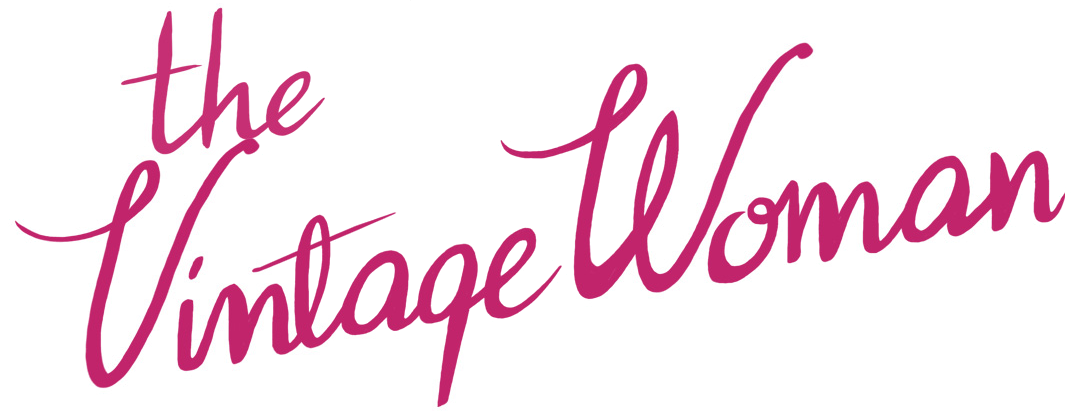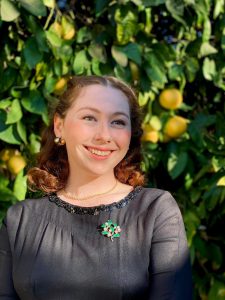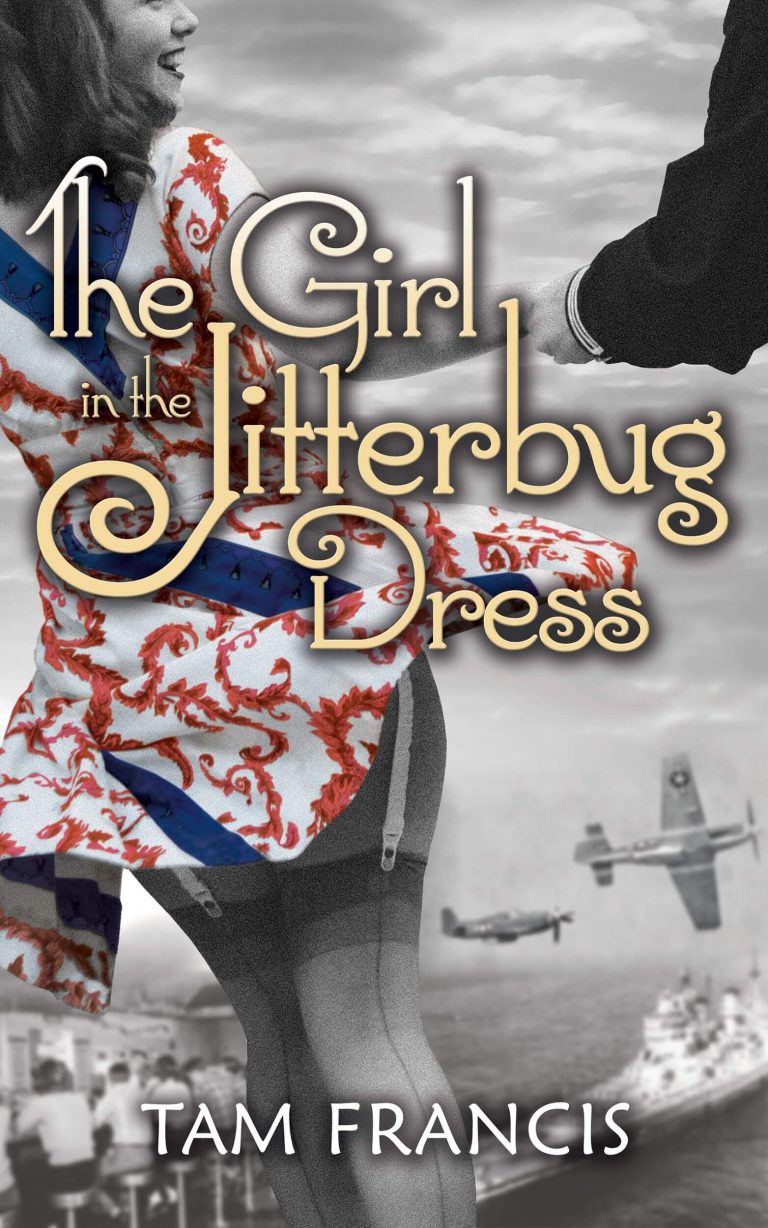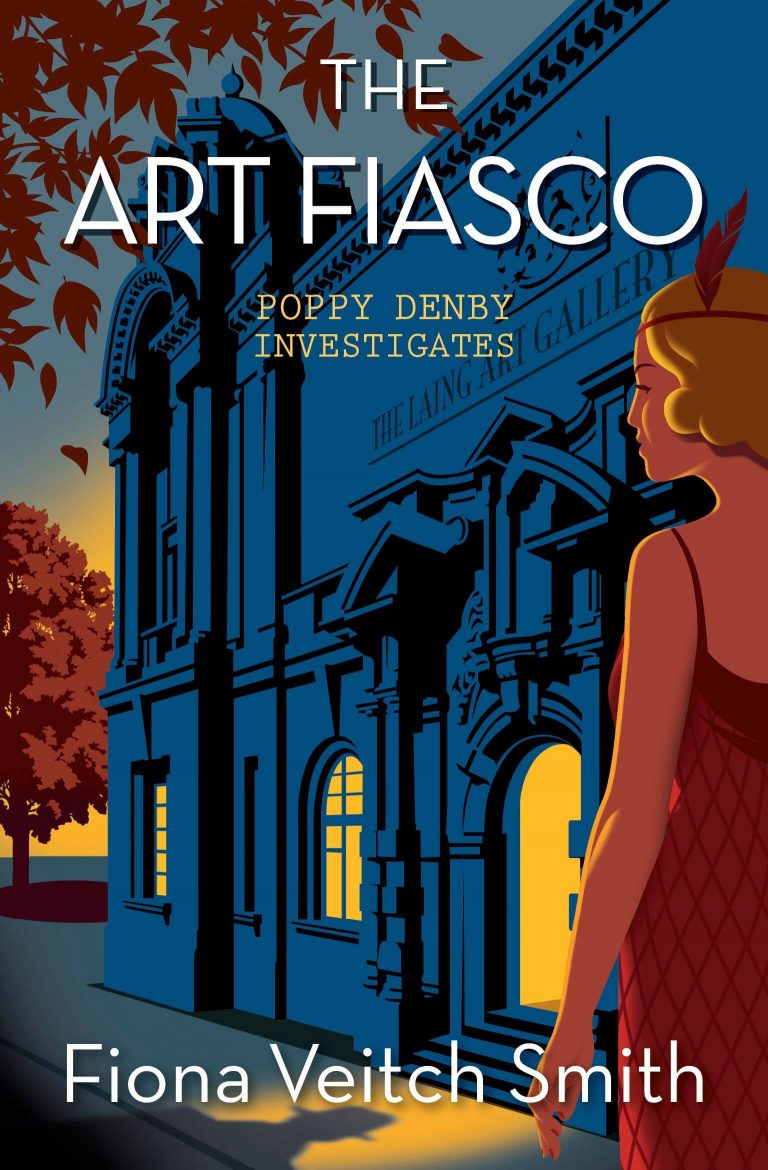The Vintage Woman Magazine Book Club #1: A Talk With Authors Tam Francis & Fiona Veitch Smith
Calling all readers! Welcome to the all-new VWM Book Club. This segment will give you the inside scoop on current authors who have caught our attention. We’ve sat down with them so that you can get to know them —and their books— a little better.
Today’s roundup features Tam Francis, author of The Girl in the Jitterbug Dress trilogy, and Fiona Veitch Smith, creator of the Poppy Denby Investigates series.
Tam Francis and The Girl in the Jitterbug Dress
“Enter a world of nostalgic fashion, classic cocktails, and dance halls. 18-year-old June finds herself face to face with one of her deepest desires. Dance. She embarks on a path of discovery and relishes the vintage skirt wrapping around her warm thighs on the crowded dance floor. And the way her partner moves her to distraction by expertly shifting his leg between hers, delicately pushing her into intricately guided steps.
When an accomplished dancer is injured before the international jitterbug contest, June is tapped to take her place. June struggles to overcome her fears, win the contest, and not fall in love with her – otherwise engaged – dance partner.
Fifty years earlier, another 18-year-old jitterbug, Violet, leads the life June and her friends emulate. But Violet’s life begins to unravel when she and her sailor beau find her grifting father passed out on her doorstep, blood oozing from his head.
They race against his deployment to tie the knot before the war can tear them apart. When his letters mysteriously stop arriving, Violet is forced to make the decision of a lifetime alone.
Half a century later, while practising for the contest, June finds an antique dress which may lead her to the one person she’s been looking for, her biological grandmother, and the key to unlocking a fifty-year-old mystery.
THE GIRL IN THE JITTERBUG DRESS is the parallel story of two young women struggling with love, loss, and redemption, united across generations by a 1940s swing dress.”
Tam, tell us a little bit about yourself.
“When I was a little girl, I fell in love with black and white movies, especially the glamour and romance of vintage fashion and dance. For as long as I can remember, I wrote stories and poetry. But I began my professional writing career as a poet and Poetry Slammer, then expanded to short story and feature-writing.
I had just started taking dance lessons when I met my future husband. He was already into vintage clothing and 1930s and 1940s gangster movies. At the time, I blogged my dance adventures on Myspace not realizing it would ever lead to a trilogy and two short story collections.
When he joined the navy and was deployed for long stretches of time, and I was at home with two small children, I turned to writing and began the first draft of The Girl in the Jitterbug Dress. I wanted my characters to do and explore where I couldn’t.
What draws you to the 1940s and swing culture?
The women of that era particularly impress me. I have much respect for how they shouldered the responsibility of hearth, home, and community all while showing they didn’t have to look like a man to do a man’s job. They could transform from a factory or farm worker to glamour-puss all in a twenty-four hour period. I like the idea that women can be all: hard-working, intelligent, daytime dames, and absolute bombshells when we want to be.
Swing culture makes me feel connected to the past, to those who came before me, and more immense than just a girl in a jitterbug dress.
What inspired you to use dual storylines?
I wanted to connect to the swing resurgence of the 1990s to the 1940s swing era. For a hot minute in the 90s, the entire world fell under the swing spell again. I also wanted to research and pay homage to the inspiration for the neo-swing resurgence, comparing, contrasting, and connecting the two eras, paying special attention to women’s roles in those times.
Tell us about your research process.
I researched as I went. I did the most research on how rationing worked, what conditions were like during wartime, and how the military operated in WWII in America.
I also spent gobs of time watching old movies and writing down 1940s American slang, as well as researching fashions in old catalogues, magazines, and news stories.
When deciding on clothing for my characters, I almost always refer to classic movie star portraits. I especially like the photography of George Hurrell and use many of his photographs as a jumping-off point for what my characters are wearing and how their hair and make-up are done.
What do you hope your readers take away from this story?
Ultimately, I want readers to feel, think, and be moved. That’s the point of art. But specifically, I want readers to be inspired to learn how to dance and explore older music or at the very least pursue their passion. I want readers to continue to normalize female sexuality and recognize that although Violet’s choices were limited in the 1940s, as late as the 1990s, women were still struggling with their own sexual identity. I think we still are today.
Do you have any authors to recommend?
I just discovered Yangsze Choo—such a great combo of historical fiction, romance, and magical Realism.
Is there anything else you would like us to know?
Many would argue that my use of fashion in fiction is superfluous fluff and indulgent. I don’t feel that it is. Fashion isn’t frivolous. Fashion is art. Don’t ever let anyone demean your vintage lifestyle choices or crush your vintage spirit.
Besides that, The Girl in the Jitterbug Dress Dances in the Dark just launched! The third and last book in the Jitterbug Dress trilogy.
Fiona Veitch Smith and the new Poppy Denby Investigates novel, The Art Fiasco
“It’s 1924 and Poppy Denby is heading up to Northumberland to celebrate her father’s sixtieth birthday. She stops off in Newcastle en route to visit her Aunt Dot, who has temporarily relocated from London to renovate a house she’s inherited.
One of Aunt Dot’s guests is the world-renowned artist, Agnes Robson, who is staging an exhibition at the Laing Art Gallery. Reluctantly, Poppy is roped in to help when the artist’s press liaison man falls ill.
She soon discovers that the local press have dug up some dirt on Agnes relating to the tragic death of a young art teacher in Ashington Colliery, twenty-seven years earlier. As she tries to suppress the story, Poppy begins to suspect that the teacher might have been murdered and that the killer may still be on the loose…”
Fiona, tell us a little bit about yourself and your background.
My family moved to South Africa when I was 10, but I now live in Newcastle upon Tyne, where The Art Fiasco is set. I studied history and journalism at university and qualified as a print journalist. I worked on both the crime and arts beats of a Cape Town newspaper which eventually inspired the character of Poppy Denby. Creatively, I have written for theatre and film and books for adults and children. Being shortlisted in 2016 for the prestigious Crime Writers’ Association Historical Dagger really encouraged me that this was where my creative talents lay.
Why do Poppy and her detective adventures work so flawlessly in a 1920s setting?
The 1920s was a period of great advances for women as they started to receive the vote and new opportunities were opening for them in the professional world. However, there was still much opposition to women’s advancement and that creates tension. The combination of opportunity and opposition is a fertile setting for a story about a young woman battling against the system. Also, in the post-war period, there is a juxtaposition of great poverty and wealth and deep issues of social injustice that resonate with us today.
What draws you to Mystery as a genre?
As a reader, I always enjoy the challenge of working out a puzzle. As a writer I enjoy the complexity of creating a mystery and muddying it with red herrings – you have to keep lots of balls in the air at the same time and this is intellectually stimulating (although often stressful!). In addition to that, I enjoy being able to put things right with the world. Something that isn’t always possible in reality, so I take pleasure in being able to do so in a fictional world.
What separates The Art Fiasco from the previous books?
The Art Fiasco is the fifth book in the series and differs from the others in that it is a story of Poppy coming home to the northeast. The Art Fiasco has more working-class characters and less glitz and glamour than the first four books – but there’s still some of it there!
The mystery in each book can be enjoyed as a standalone, but readers will get the most benefit if they start the series at the beginning and follow Poppy’s personal story too.
Tell us about your research process.
I read lots of material about the 1920s – the fashion, art, culture, history, politics. I’m a member of the British Newspaper Archive and spend far too much time delving through old newspapers. I read books written in the period – fiction, non-fiction and memoir – in order to get an idea of the voice of my characters. When possible, I visit the locations in my book and walk the streets and travel on buses and trains as Poppy will do. A particular fun bit of research is that I go shopping for Poppy and her best friend, the flapper Delilah, at the start of each book. I choose a couple of outfits for them that were really released that year. I have a book of original 1920s designs which I refer to, as well as the V&A archives.
What do you think is an ethical way to incorporate fiction with historical events?
I have a bachelor’s degree in history so am very respectful of historical sources and figures.
However, I am also a novelist and am aware that historical events and figures provide material for my fictional world, and sometimes ‘facts’ need to change. However, these are real people whose descendants are still alive, and I believe there is a responsibility to be as respectful as possible of their memories. Balancing them is the task of every good historical novelist. I know some authors refuse to change even a jot or tittle of history. I am slightly more flexible, but I never change anything major.
What do you hope your readers take away from this story?
I hope that readers will come away feeling that they’ve actually spent time in the 1920s and have made a new friend in Poppy Denby. I hope that they’ll look forward to visiting again. With The Art Fiasco, specifically, I hope they will feel that justice has been done.
Is there anything else you would like us to know?
As part of my research and character building for the Poppy Denby series, I set out to make my own original 1920s outfits for my book launches. I sourced original 1920s patterns and started out using a 1920s Singer sewing machine. Unfortunately, with the Covid restrictions, I have not been able to have a book launch this year, which usually has a live jazz band playing 1920s standards and guests invited to attend in 1920s outfits. However, I would be delighted to introduce my books to Vintage Woman readers, and hope they will visit Poppy and I at www.poppydenby.com
Stay tuned for the next instalment of The Vintage Woman Magazine Book Club…





So honored to share this space, thank you. And thank you for introducing a new author to me. I can’t wait to check out Fiona’s books!